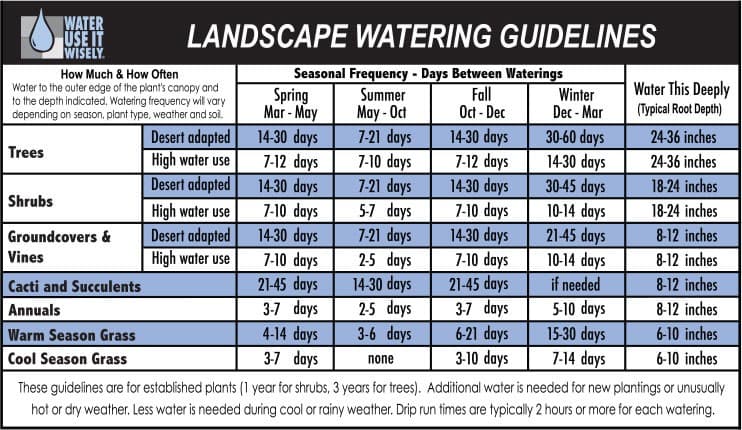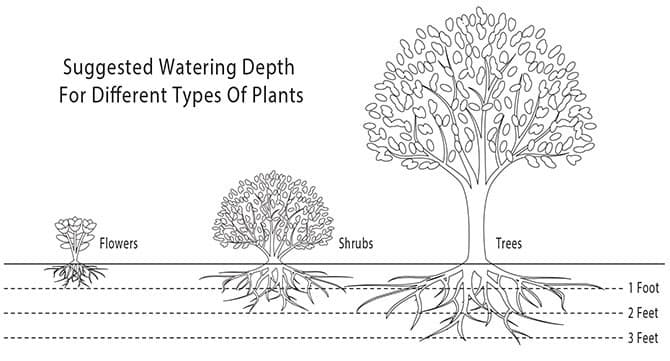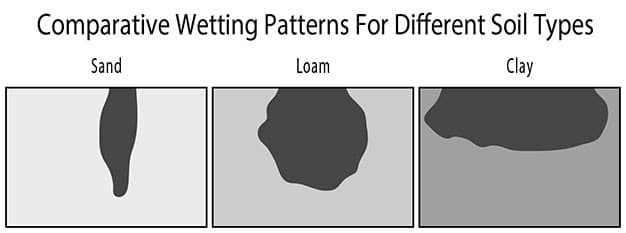Landscaping with Style
Watering Schedules
Maintain
Watering Schedules Tailored for Landscapes in the Sonoran Desert
Nearly all of the landscape plants available for use in the Sonoran Desert need regular irrigation to get them established, and some will need periodic irrigation to keep them healthy. This is due to high temperatures, low humidity, near year-round sunshine, very low rainfall (only seven to ten inches a year) and frequent windy conditions that speed water evaporation from the soil and plants. Once established, desert-adapted plants can survive on rainfall alone with occasional supplemental waterings during extended dry periods.
Generally, new plants need to be watered more frequently than established plants. Those in sunny areas need more water than plants in shaded areas, and plants that are exposed to the wind need more than those that are protected.
Although many plants need irrigation year-round, far less water is required during the cooler times of the year than during the summer months. Seasonal adjustment of irrigation schedules is one of the easiest and most effective ways to avoid wasting water. Irrigation schedules should be adjusted at least four times a year. Change the frequency of irrigations to accommodate differences in seasonal water requirements.
Two watering schedules are provided: one for new plants and another for established plants.
Please note that these are general guidelines. Inspect your plants regularly for signs of overwatering or underwatering and adjust irrigation schedules to accommodate the conditions and plants in your yard.

A Watering Schedule for New Plants
The guidelines presented here are for native and desert-adapted plants. High water use plants will require more frequent and/or longer irrigations. Follow these watering guidelines until your plants are established – approximately one year for shrubs and three years for trees. Watch your plants closely for signs of stress, especially during extremely hot temperatures.
Weeks 1 & 2: water every 1-2 days in summer, every 3-4 days fall through spring
Weeks 3 & 4: water every 3-4 days in summer, every 6-7 days fall through spring
Weeks 5 & 6: water every 4-6 days in summer, every 7-10 days fall through spring
Weeks 7 & 8: water every 7 days in summer, every 10-14 days fall through spring
After Week 8: gradually extend the time between irrigations until plants are established
After the eighth week, check the position of each water distribution end point (drip emitter or micro tubing). Move the end points closer to the outer edge of the root ball. After the first summer, there is rarely a need to irrigate low water use trees and shrubs more than once a week.
Even though these guidelines are appropriate for most landscapes, new plants may need water more or less frequently. As a rule of thumb, each irrigation should wet the root ball and one to two inches of surrounding soil.
A Watering Schedule for Established Plants
The watering schedule to the right includes guidelines for many types of established landscape plants. Again, check periodically for plant stress and adjust your irrigation schedule as needed. It might be helpful to put a copy of this watering schedule in your controller box.

Tips to Help Save Water & Maximize Plant Health
Understanding effiecient outdoor water use is important in our arid climate.
- Use two simple tools to help you water more efficiently
a. Put a rain gauge in your yard. If it rains 1/2 inch or more at one time, skip the next irrigation. If you have a smart controller, you may have a rain sensor wired into your controller that will automatically shut off the system.
b. Use a soil probe to determine whether or not irrigation water is reaching the entire root zone. The soil probe will move easily through moist soil and will stop or become very difficult to move when you reach dry soil. A long screwdriver or a piece of rebar with one end sharpened can be used instead.

- Microclimates are landscape situations where the conditions are different from those in other parts of your yard. Different microclimates exist in nearly every yard and can be created by differing soil types, exposure to sun and wind, and reflective surfaces like walls and driveways. Water requirements of plants can be affected by microclimates. You may find that some trees and shrubs need more water than others. In these areas, it may be necessary to supplement regular irrigations with some hand watering. Soaker hoses or a garden hose and diffuser are especially good tools to use in these instances.
- To minimize evaporation, water turf very early in the day (ideally between 1:00 a.m. and 7:00 a.m. during the warmer months).
- In general, it's time to water when the top one-half to one-third of the soil around a plant dries out. Water moves more quickly through sandy soils than it does through the clay loam soils that are most common in our area. If your plants are in sandy soil conditions, you may need to water them more often with shorter irrigation times.
- Between six months and one year after planting, move drip emitters farther away from plants to encourage a well-developed root system.

Salt Accumulation
Salts occur naturally in our local water supplies. Fertilizers also contain salts that accumulate in the soil around landscape plants. High salt levels can damage many kinds of plants. An extra-long irrigation will help reduce salt buildup around plants. (This practice is called leaching.)
Leach salts from the soil every six to twelve months by irrigating twice as long than usual. If you live in an area with a high concentration of salts in the water, more frequent leaching may be necessary (perhaps two or three times during the summer and once during the cooler months).
A good, long rain that comes at the right time may flush extra salts from the soil and eliminate the need for this activity.
Overwatering and Underwatering
The following are common signs of underwatering:
- Soil in the lower portion of the root zone is dry
- Older leaves turn yellow or brown and drop
- Leaves are wilted or drooping
- Leaves curl
- Stems or branches die back
The following are common signs of overwatering:
- Soil is constantly damp.
- Leaves turn lighter green or yellow.
- Young shoots are wilted or drooping.
- Leaves are green yet brittle.
- Algae and/or mushrooms are on or around plants.
- Growth is excessive.
